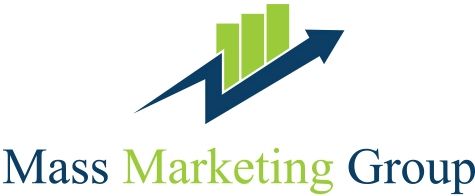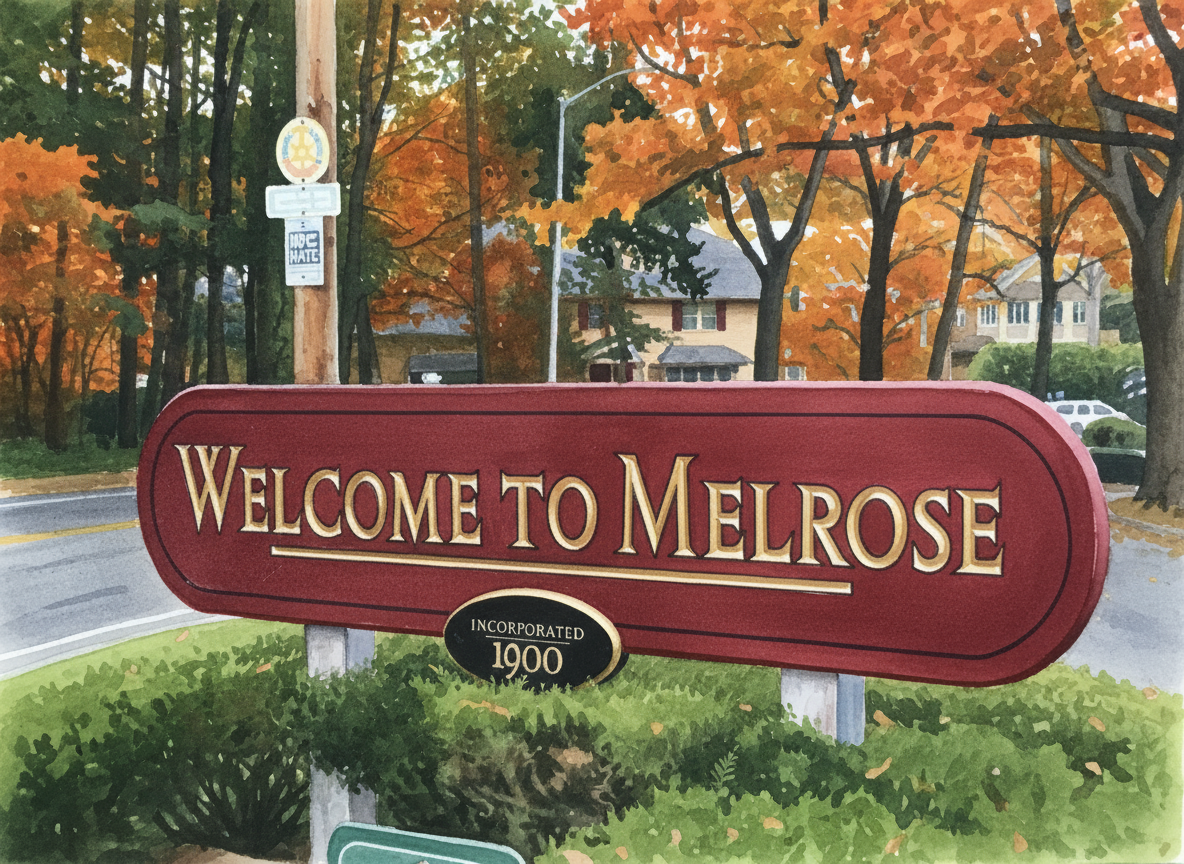Google Business Profile Optimization: The Complete Guide for Local Businesses
The single most powerful free marketing tool!

Your Google Business Profile is the single most powerful free marketing tool available to local businesses. It's what shows up when people search for businesses like yours on Google and Google Maps. It's the first impression potential customers get before they visit your website or walk through your door.
Yet most small businesses either haven't claimed their profile, or they've set it up halfway and abandoned it. That's leaving money on the table every single day.
A fully optimized Google Business Profile can dramatically increase your visibility in local search results, generate more phone calls and direction requests, build trust through customer reviews, and drive more foot traffic to your location. All without spending a dime on advertising.
This guide walks you through every element of Google Business Profile optimization, from claiming your listing to advanced strategies that help you dominate local search results.
What Is Google Business Profile?
Google Business Profile (formerly called Google My Business) is a free tool that lets you manage how your business appears across Google Search and Google Maps. When someone searches for your business name or a service you offer, your profile can appear in several places:
The local pack: Those three business listings that appear at the top of search results with a map, usually above all the regular website listings. This is prime real estate.
Google Maps results: When people search directly in Google Maps or use map view in search results, your profile determines whether you show up and how you rank.
Knowledge panel: When someone searches your exact business name, a detailed information box appears on the right side of search results with your hours, address, phone number, photos, and reviews.
Local finder: The "More places" link in the local pack leads to an expanded list where your profile can appear.
If your business serves customers at a physical location (retail stores, restaurants, offices) or travels to customers (plumbers, contractors, mobile services), you need an optimized Google Business Profile.
Why Google Business Profile Matters More Than You Think
Most small business owners underestimate how critical this tool is. Here's what the data shows:
Google is the dominant search engine, handling over 90% of searches. When people need a local business, they start with Google. If you're not showing up in those local results, you're invisible to the majority of potential customers actively looking for what you offer.
The local pack (those three businesses at the top with the map) gets the lion's share of clicks. Studies show that being in the local pack can drive more traffic than ranking first in regular organic results below it.
Reviews displayed on your Google Business Profile directly influence buying decisions. Consumers trust Google reviews as much as personal recommendations. A business with dozens of positive reviews converts dramatically better than a business with few or no reviews.
Mobile searches for local businesses lead to action. Over 75% of people who search for something nearby on their smartphone visit a business within 24 hours, and 28% of those searches result in a purchase.
Your competitors are already using this tool. If they show up in the local pack with strong reviews and you don't, they're capturing customers who should be yours.
Step 1: Claiming and Verifying Your Business
Before you can optimize anything, you need to claim your listing. Many businesses already have a Google listing created automatically from public data sources. You need to claim ownership to control it.
How to claim your business:
Go to google.com/business or search for your business name on Google and click "Claim this business" if the option appears. Sign in with a Google account (create one if you don't have one). Follow the prompts to claim your listing.
Google will need to verify that you actually own or manage this business. Verification usually happens through one of these methods:
Postcard verification: Google mails a postcard with a verification code to your business address. This takes 5 to 14 days. Once you receive it, log back in and enter the code.
Phone verification: Some businesses can verify instantly by receiving an automated phone call or text message.
Email verification: Certain businesses can verify through email if Google has a verified email address on file.
Video verification: Some businesses can submit a video showing the business location and signage.
Most businesses will use postcard verification. Don't skip this step. You cannot fully manage or optimize your profile until verification is complete.
What if someone else claimed your business?
Sometimes previous owners, employees, or marketing agencies claim listings and forget to transfer them. If you need to reclaim your business, use the "Request access" option in Google Business Profile or contact Google support for help recovering the listing.
Step 2: Completing Your Business Information
Once verified, you need to fill out every single field in your profile. Incomplete profiles rank lower than complete profiles. Google rewards businesses that provide comprehensive, accurate information.
Business name:
Use your real business name exactly as it appears on your storefront, business license, and website. Don't add keywords, locations, or descriptive text to your business name. "Joe's Pizza" is correct. "Joe's Pizza Best NY Style Pizza in Boston" violates Google's guidelines and can get your listing suspended.
If your business has a legal name that includes LLC, Inc., or other designations, decide whether to include it and then be consistent everywhere online.
Business category:
This is one of the most important fields. Your primary category tells Google what your business does and determines which searches you're eligible to appear in.
Choose the most specific category that accurately describes your core business. Don't just pick "Restaurant" if you're specifically an "Italian Restaurant" or "Pizza Restaurant." The more specific, the better.
You can add secondary categories that describe additional services. A plumbing company might use "Plumber" as primary and add "Water Heater Supplier," "Drain Cleaning Service," and "Bathroom Remodeler" as secondary categories.
Business address:
Enter your complete, accurate address. This must match your website exactly. If your website says "123 Main Street," your profile should say "123 Main Street," not "123 Main St."
For service area businesses that don't have a physical location customers visit (like contractors or mobile services), you can hide your address and instead list the areas you serve.
Service areas:
If you travel to customers rather than having them come to you, specify which cities, towns, or zip codes you serve. Be realistic. Don't claim you serve a 50-mile radius if you actually only work within 15 miles. Google may not show your business to searchers outside your stated service area.
Phone number:
Use a local phone number, not a generic 1-800 number. The phone number must match what's on your website. Consider using a tracking number so you can measure how many calls come from your Google profile but make sure it's a real local number.
Website URL:
Link to your actual website, not a Facebook page or third-party platform. If you don't have a website yet, Google offers a basic free website builder, though a proper professional website is far better.
At Mass Marketing Group, we offer free assisted Google Business Profile setup for all new website customers. When you invest in a professional website with us, we'll help you claim, verify, and fully optimize your Google Business Profile at no additional charge, ensuring your online presence is rock-solid from day one.
Business hours:
List your regular hours accurately. Update them for holidays. Use the special hours feature to mark days you're closed or have different hours. Nothing frustrates customers more than showing up during posted hours to find you closed.
Business description:
You have up to 750 characters to describe your business. Use them wisely. Explain what you do, what makes you different, how long you've been in business, and what customers can expect.
Write naturally for humans, not for robots. Include relevant keywords naturally, but don't keyword-stuff. Focus on benefits and value.
Example: "Family-owned Italian restaurant serving authentic homemade pasta, wood-fired pizza, and classic Italian dishes since 2005. We use fresh, locally sourced ingredients and traditional recipes passed down through generations. Dine in our cozy atmosphere or order takeout for a taste of Italy at home. Serving lunch and dinner seven days a week."
Attributes:
Google offers dozens of attributes depending on your business type. These are characteristics like "wheelchair accessible," "outdoor seating," "free Wi-Fi," "women-owned," "veteran-owned," etc.
Select every attribute that applies. These help customers filter search results and make informed decisions. Some attributes can significantly impact whether someone chooses your business.
Opening date:
If your business is new, add your opening date. Google shows "Opening soon" or "Recently opened" labels that can generate curiosity and support for new businesses.
Step 3: Adding High-Quality Photos
Photos are incredibly important. Businesses with photos receive 42% more requests for directions and 35% more clicks to their websites compared to businesses without photos.
Types of photos to upload:
Exterior photos: Show your storefront, building, signage, and parking area. Help customers recognize your location and know where to go.
Interior photos: Show your space, atmosphere, decor. For restaurants, show the dining area. For retail, show your displays. For offices, show your reception area.
Products: Show what you sell or create. Restaurants should show food. Retail stores should show merchandise. Service businesses should show completed projects.
Team photos: Show your staff, your team in action, the owner. This builds trust and makes your business feel personal.
At work photos: Show your process, your craft, your service in action. Contractors can show job sites. Salons can show services being performed (with client permission).
Logo: Upload your official logo as your profile picture. This appears in search results and maps.
Cover photo: Choose a striking image that represents your business. This appears prominently at the top of your profile.
Photo quality standards:
Use high-resolution images (at least 720 pixels wide by 720 pixels tall). Photos should be well-lit, in focus, and properly framed. Avoid blurry, dark, or poorly composed images. Don't use stock photos. Show your actual business, products, and team.
Take new photos regularly and upload them. Fresh content signals an active business. Add photos of seasonal offerings, new products, recent projects, events, and behind-the-scenes moments.
Step 4: Generating and Managing Reviews
Google reviews are ranking factors, trust signals, and conversion drivers all rolled into one. They're arguably the most important element of your profile after basic business information.
Why reviews matter:
Businesses with more reviews rank higher in local search. The number and quality of reviews directly influence your position in the local pack and map results.
Reviews build trust. Before contacting you, potential customers read your reviews to gauge whether you're reliable, professional, and worth their business.
Reviews provide free marketing. Customers who leave detailed positive reviews are essentially writing testimonials that persuade others to choose you.
How to get more reviews:
Simply ask. The biggest mistake businesses make is never asking satisfied customers for reviews. After completing a job, making a sale, or serving a meal, ask the customer if they'd be willing to leave a review.
Make it easy. Send customers a direct link to your review page. You can get this link from your Google Business Profile dashboard. Include it in follow-up emails, text messages, or receipts.
Time it right. Ask when the customer is happiest, usually right after a positive experience. Don't wait weeks later when the experience isn't fresh.
Train your team. Make sure your employees know to ask for reviews when appropriate. The front desk, checkout counter, or completion of service are natural moments to request reviews.
Review best practices:
Never offer incentives for reviews (that violates Google's policies). Never buy fake reviews (Google will catch you and penalize your listing). Never write reviews for yourself or have employees write them (also prohibited).
Do respond to every review. Thank customers for positive reviews. Address negative reviews professionally and constructively. Your responses show you care about customer feedback and are willing to make things right.
Respond promptly, ideally within 24 to 48 hours. Keep responses professional and personalized. Don't use generic copy-paste responses.
Handling negative reviews:
You will get negative reviews eventually. Don't panic. How you respond matters more than the review itself.
Respond calmly and professionally. Acknowledge the customer's concern. Apologize for their experience. Offer to make it right. Take the conversation offline by providing a phone number or email.
Never argue. Never be defensive. Never attack the reviewer. This makes you look bad to everyone reading the reviews.
If a review is fake or violates Google's policies (spam, fake, off-topic, illegal content, conflicts of interest), you can flag it for removal. However, Google rarely removes reviews unless they clearly violate policies.
The best response to negative reviews is collecting more positive reviews. A few negative reviews among dozens of positive ones won't hurt you. Focus on improving your review ratio rather than obsessing over individual bad reviews.
Step 5: Using Posts to Engage Customers
Google Business Profile posts are like mini social media updates that appear directly on your profile. Most businesses don't use this feature at all, which means you can gain an advantage by using it consistently.
Types of posts:
Updates: Share news, announcements, changes to hours or services, or general information about your business.
Offers: Promote special deals, discounts, or limited time offers. These posts can include a coupon code or promotion details.
Events: Announce upcoming events, workshops, sales, open houses, or special occasions happening at your business.
Products: Highlight specific products you sell with photos, descriptions, and prices.
How to use posts effectively:
Post regularly, at least once per week if possible. Each post can include up to 1,500 characters, photos or videos, and a call-to-action button.
Use high-quality images or videos. Visual posts get more engagement than text-only posts.
Include clear calls-to-action. Tell people what you want them to do: call now, visit today, book online, learn more.
Promote timely content. Posts are most effective when they're relevant to what's happening now: seasonal offerings, current promotions, upcoming events.
Posts expire after seven days, so consistent posting keeps your profile active and engaging.
Step 6: Answering Questions
Your Google Business Profile has a questions and answers section where anyone can ask questions about your business and anyone can answer.
Monitor this section regularly. When potential customers ask questions, answer them promptly and thoroughly. This shows you're responsive and engaged.
You can also seed your Q&A section with common questions. Ask and answer your own questions about topics customers frequently inquire about: "Do you offer gluten-free options?" "What's your return policy?" "Do you provide free estimates?"
This provides helpful information upfront and can reduce the number of calls you get answering the same questions repeatedly.
Step 7: Monitoring Insights and Performance
Google Business Profile provides analytics showing how customers find and interact with your listing.
Key metrics to track:
How customers search for you: Shows whether people found you by searching your business name directly or by searching for your category/service.
Where customers view your profile: Shows whether people found you on Google Search or Google Maps.
Customer actions: Shows how many people called, visited your website, requested directions, or clicked your photos.
Photo views: Shows how many times customers viewed your photos compared to similar businesses.
Review metrics: Shows your total number of reviews and average rating over time.
Check your insights monthly to understand what's working and where you can improve. If you're getting lots of direction requests but few phone calls, maybe your phone number isn't prominent enough. If you're getting few impressions overall, your profile might need more complete information or more reviews.
Step 8: Staying Consistent Across the Web
Your Google Business Profile doesn't exist in isolation. Google cross-references information from your profile with information found elsewhere online: your website, Facebook, Yelp, industry directories, data aggregators.
When information is consistent everywhere, Google trusts it. When information conflicts (different phone numbers, addresses, or business names), Google doesn't know which version is correct and may not rank you as highly.
Maintain NAP consistency:
NAP stands for Name, Address, Phone Number. These three elements must be identical everywhere your business is listed online.
Check your website, Facebook page, Yelp profile, Yellow Pages, industry directories, BBB, and any other platforms where your business appears. Make sure the formatting is exactly the same.
If your Google profile says "123 Main Street, Melrose, MA 02176" then your website and all other listings should use that exact format. Don't use "123 Main St." or "123 Main Street, Suite A" or "123 Main, Melrose, Massachusetts" in other places.
Even small inconsistencies can hurt your rankings. Be obsessively consistent.
Advanced Optimization Strategies
Once you've covered the basics, these advanced tactics can give you an edge over competitors.
Get listed in relevant categories:
Don't just list your most obvious category. If you offer multiple services, use secondary categories strategically. A restaurant that does catering should add "Caterer" as a secondary category. A hair salon that sells products should add "Beauty Supply Store."
Optimize for voice search:
More people are using voice search: "Hey Google, find a plumber near me." Make sure your profile answers common questions naturally. Your business description should sound conversational.
Track and call customers back:
When someone calls from your Google listing, answer professionally and ask how they found you. Track leads from Google separately to understand your ROI.
Post regularly with strategic CTAs:
Use Google Posts weekly with clear calls-to-action that match your current business goals. Running a promotion? Post about it. Have availability this week? Post about it.
Encourage photo uploads from customers:
When customers upload photos to your listing (photos of their meals, their haircuts, their completed projects), it provides authentic social proof and fresh content.
Respond to duplicate listings:
Sometimes your business has multiple listings in Google. This confuses customers and dilutes your SEO. Find and report duplicate listings to have them merged or removed.
Use the messaging feature:
Enable messaging so customers can send you questions directly through your Google profile. Respond quickly to these messages to build trust and convert leads.
Common Mistakes That Hurt Your Rankings
Keyword stuffing your business name: Adding extra keywords to your business name violates Google's guidelines and can get your listing suspended. Don't do it.
Using a P.O. Box as your address: Google wants a real street address where customers can visit or where your business physically operates.
Choosing the wrong category: Picking a too broad or incorrect category means you won't show up in relevant searches. Take time to choose categories carefully.
Not updating hours: Showing incorrect hours frustrates customers and leads to poor reviews. Keep hours current, especially around holidays.
Ignoring reviews: Not responding to reviews makes you look unengaged and unprofessional. Always respond.
Posting low-quality photos: Blurry, dark, or irrelevant photos hurt more than they help. Only upload high-quality images.
Violating Google's guidelines: Practices like fake reviews, hidden information, or misleading content can get your listing suspended. Play by the rules.
How Long Does Optimization Take?
Claiming and verifying your profile takes 5 to 14 days due to postcard verification.
Fully completing your profile (all fields, photos, business description) takes 2 to 4 hours if you have all your information and images ready.
Seeing results from optimization takes 2 to 8 weeks. Google needs time to re-index your listing and adjust rankings based on your improved profile.
Generating reviews is an ongoing process. Aim for 2 to 5 new reviews per month consistently.
Maintaining your profile requires about 30 minutes per week for responding to reviews, posting updates, and checking for questions.
The investment of time is small compared to the return. A well-optimized Google Business Profile can generate hundreds or thousands of dollars in new business every month, completely free.
When to Get Professional Help
Many business owners optimize their own Google Business Profile successfully.
However, professional help makes sense if you're too busy to handle it yourself, if you're in a highly competitive market where every detail matters, if you've had your listing suspended and need expert help recovering it, or if you want comprehensive digital marketing beyond just your Google profile.
At Mass Marketing Group, we specialize in local SEO and Google Business Profile optimization. We handle everything from claiming and verifying your listing to ongoing optimization, review management, and strategic posting. And remember, all new website customers receive free Google Business Profile setup and optimization as part of their package.
The Bottom Line
Your Google Business Profile is free, powerful, and essential for local business success. Most of your competitors are using it poorly or not at all. That's your opportunity.
Claim your listing, fill out every field completely, upload high-quality photos, generate consistent reviews, post regular updates, and monitor your results. Do this well and you'll dominate local search results in your category.
The customers you want are searching for businesses like yours on Google right now. Make sure they find you.
Need help optimizing your Google Business Profile? Mass Marketing Group offers complete Google Business Profile management including setup, optimization, review generation strategies, and ongoing maintenance. Plus, all new website customers get free Google Business Profile setup and optimization. Contact us today for a free consultation and visibility assessment.



